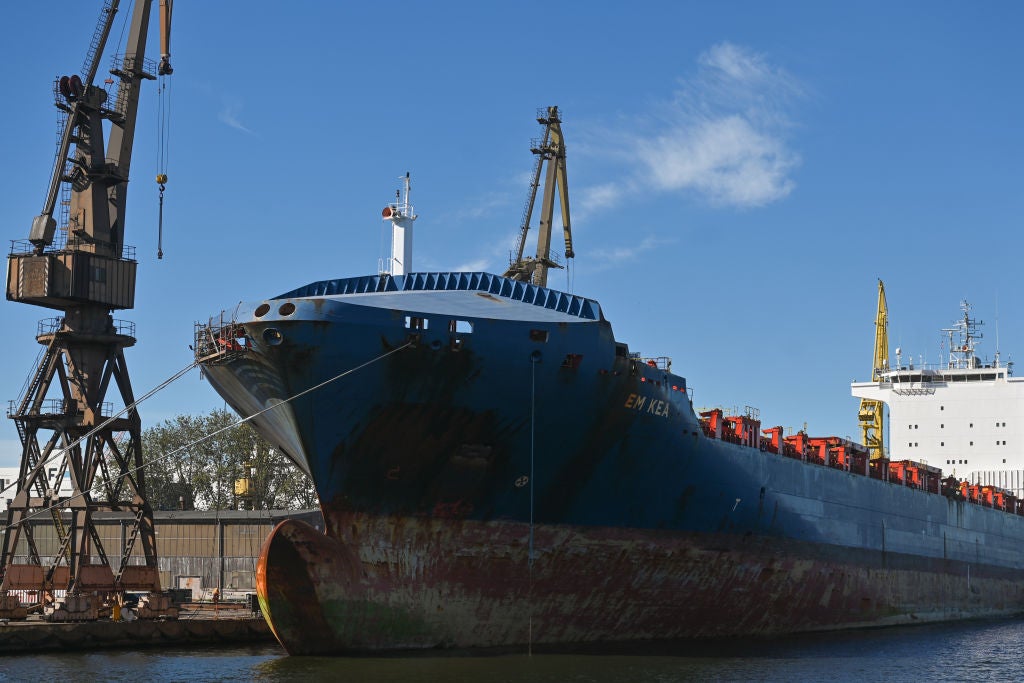At COP27, industry actors from a major, carbon-intensive sector very publicly stepped up their commitments to decarbonise. Private sector leaders from across the maritime shipping value chain – ship owners, ship operators, financers and ports – jointly committed to start switching to low-emissions fuels this decade. The joint statement was a bold move to get an industry that has historically been fuelled by the cheapest, dirtiest fuel on track to reach net zero by 2050.
The clear targets set by the group – getting commercially viable zero-emissions vessels operating on the deep seas this decade, and ensuring low-emissions fuels make up at least 5% of total shipping fuel use by 2030 – were made more significant with commitments from the other half of the joint statement’s signatories: green hydrogen producers. Producers of this low-emissions fuel agreed to scale up production of green hydrogen to 5.5 million tonnes per year by 2030 for use in shipping.
Taken together, these targets mean supply and demand for clean shipping fuel is ready to take off. This message should not be lost on the key regulatory body for the shipping sector, the International Maritime Organization (IMO).
The IMO plays an indispensable role in orchestrating shipping decarbonisation because, by law, the mandates it creates must then be implemented by all 175 of its member states. In 2018, when the IMO set its initial, modest emission-reduction target, for instance, the rule induced shipbuilders and financiers to build more efficient ocean-going vessels.
However, the IMO, in contrast to other international organisations regulating similar hard-to-abate sectors, has yet to commit to a net-zero goal by 2050. Justification for this reluctance has been that widescale use of green fuel alternatives was not viable in the near term. While green hydrogen-derived fuels – specifically, ammonia and methanol – are emerging as the main scalable, zero-emission shipping fuel candidates because of their energy density and compatibility with conventional engines, there is currently limited supply of the cheap, green hydrogen feedstock needed to make them.
The private sector announcement at COP makes that justification obsolete. By putting together the pieces to reach the 5% clean fuel adoption rate, a “tipping point” will be reached that analysis has shown will lead to a virtuous cycle of rapid learning rates, diffusion and dramatic cost decreases for zero-emission fuels. This path forward should assuage concerns from the IMO and other industry participants, bolstering their confidence to set ambitious targets.
There is no better window of opportunity to act than now, as the IMO is in the process of revising its greenhouse gas strategy and goals, slated to be announced next spring.
What targets should the IMO set to align with the Paris Agreement?
The bare minimum is to set a 2050 goal of 100% emission reductions on a well-to-wake basis. The IMO should go beyond the 2050 goal to also set interim, legally binding targets for 2030 and 2040 to guide near-term efforts to drastically reduce emissions. The maritime industry, like any other industry, is bound by investor pressure for short-term financial gains, which often comes into conflict with the urgent need to adopt low-emissions fuels and technologies. Verifiable, intermediate targets alleviate this tension and make the long-term objective more feasible by helping shipping companies justify making sizeable investments in nascent fuels with longer time frames for financial returns. The IMO could also encourage further similar commitments by incentivising at least 5% zero-emission fuel use in the sector by 2030.
[Keep up with Energy Monitor: Subscribe to our weekly newsletter]
The shipping industry and the IMO cannot afford to delay decarbonisation of the sector. Of course, deep decarbonisation will not be easy. Meaningful long-term and interim emission-reduction targets are needed to get all actors in the maritime industry onboard, as well as demonstrate the shipping sector’s resolve to make the necessary emission reductions. Many organisations are stepping up their efforts to accelerate the path to net zero.
For its part, RMI will help catalyse new green shipping corridors and form coalitions to develop and implement robust zero-emission fuel supply strategies. There is plenty of space for new and established players in the shipping space to cooperate and shape a green shipping sector that we all deserve.







